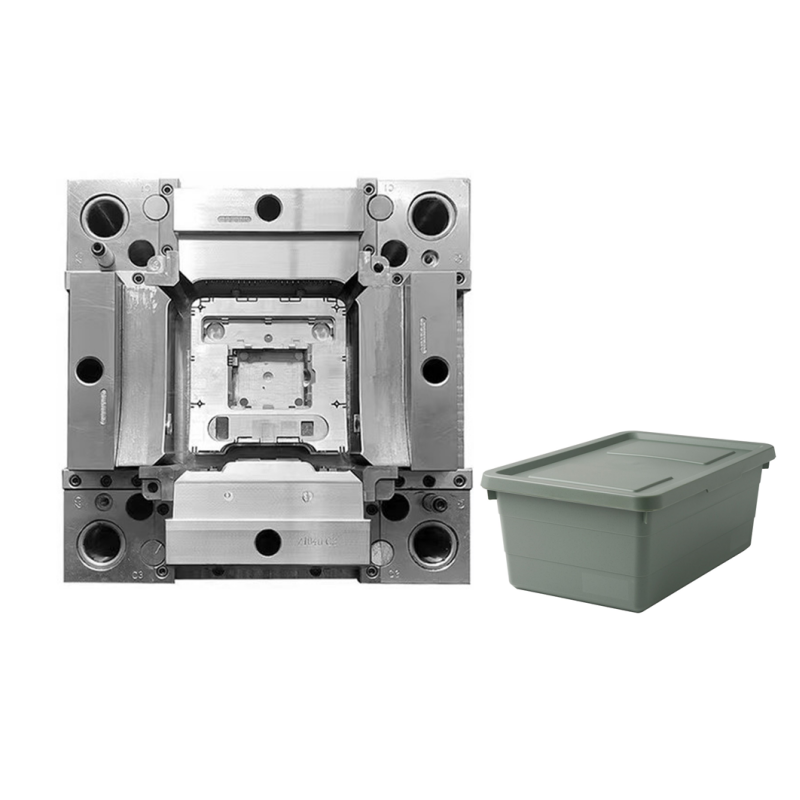Las empresas han estado presionadas en los últimos años para adaptarse a las nuevas normas sostenibles. Un área donde este cambio es fácilmente visible es el uso de moldes de inyección para envases de plástico. Parece que hoy en día, ninguna industria puede prescindir de los moldes de plástico, que van desde productos alimenticios hasta productos cosméticos. Este cambio también está impulsado por la facilidad de uso asociada con los moldes de inyección, donde las empresas solo necesitan fabricar paquetes estándar a medida sin partes ajustables, lo que permite una producción flexible en términos de minimizar desperdicios. En este artículo analizamos cómo el molde de inyección de plástico puede servir al objetivo medioambiental, sus ventajas, usos y el alcance futuro.
Algunas empresas incluso han recurrido al uso de moldes de inyección para el empaquetado de sus productos. Hoy en día, tales moldes de inyección se utilizan ampliamente en el procedimiento de empaquetado en diversas industrias, incluyendo alimentos, belleza y electrónica. Es el avance en el moldeo por inyección donde se pueden crear formas complejas más rápidamente lo que acelera la cadena de producción, y junto con las modificaciones de diseño estándar, se añade una mayor flexibilidad a la producción en masa de tales moldes. Por lo tanto, al modificar el diseño del molde de inyección, las empresas pueden disfrutar de una mayor segmentación de clientes y alcanzar mayores cantidades.
Los moldes de inyección de cajas de plástico pueden crear productos ligeros. El uso de empaques ligeros disminuye en gran medida la cantidad de materiales utilizados, los costos de transporte y la cantidad de contaminación por carbono emitida durante el envío. Dado que muchas empresas están buscando mejorar su perfil de sostenibilidad, la adopción de estrategias de empaque más ligeras se está convirtiendo en una prioridad. Tal transición no solo es una victoria para el medio ambiente, sino también para los consumidores que están siendo cada vez más exigentes en sus compras.
Además, el logro de la integración de la tecnología de moldeo por inyección incluye la posibilidad de utilizar desechos en la producción de envases de plástico. Al emplear plásticos reciclados dentro de su cadena de suministro, los fabricantes pueden reducir su consumo de materiales vírgenes, salvar el medio ambiente y minimizar los desechos en los vertederos. Tal modelo está en línea con el modelo de economía circular donde los bienes se fabrican para fines de reutilización y reciclaje: tal práctica mejora la agenda de sostenibilidad.
Los moldes de inyección son únicos y pueden generar nuevas ideas que no solo añaden usabilidad, sino que también lucen geniales. Por ejemplo, el embalaje se puede realizar de manera que sea apilable, lo que ahorra espacio durante el transporte y el almacenamiento. Además de esto, los procedimientos de moldeo avanzados pueden crear envases a prueba de niños y reutilizables que protegen el producto y son fáciles de usar para los consumidores finales. Estos desarrollos abordan preocupaciones importantes y atraen a los clientes que están preocupados por su entorno y buscan productos y prácticas ecológicas.
En los próximos años, el futuro de los moldes de inyección para cajas de embalaje de plástico parece prometedor. Se espera que el diseño de moldes y los procesos de producción avancen a medida que la tecnología avance. La incorporación de tecnologías inteligentes en la fabricación, como IoT y AI, puede mejorar la eficiencia y la reducción de desechos. Además, las políticas gubernamentales y la apreciación o necesidades de los consumidores por soluciones ecológicas promoverán tendencias de reemplazo de materiales utilizados para la inyección por soluciones sostenibles, incluyendo plásticos biodegradables y compostables.
En resumen, los moldes para la inyección de cajas de embalaje de plástico tienen un papel clave en la búsqueda de alternativas de embalaje ecológicas. Tales moldes de inyección son esenciales para centrarse en el diseño de embalajes que sean ligeros, fomenten el uso de contenido reciclado y promuevan nuevas características. Con la creciente demanda de soluciones más ecológicas en las industrias, el papel de la tecnología de moldeo por inyección se volverá aún más central, lo que resultará en perspectivas de embalaje más sostenibles.


 EN LÍNEA
EN LÍNEA